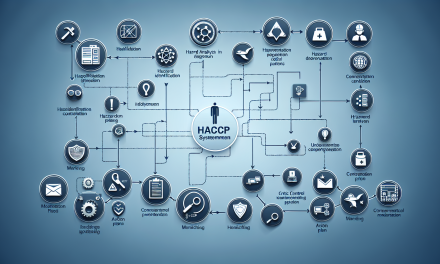Table of Contents
- Introduction
- What is HAZOP?
- The Importance of HAZOP Leadership
- Advanced HAZOP Leadership Skills
- Benefits of Advanced HAZOP Training
- Real-World Applications of HAZOP
- Resources for HAZOP Leaders
- FAQs
- Conclusion
Introduction
In today’s dynamic industrial landscape, understanding the intricacies of process hazards is paramount for the safety and efficiency of operations. Leaders in this field need specialized skills and knowledge to navigate complex scenarios effectively. Thus, mastering HAZOP leadership emerges as a critical focus for professionals seeking to enhance their capabilities. This article delves into what HAZOP entails, the significance of effective leadership within HAZOP studies, and the myriad benefits that come with advanced leadership training.
What is HAZOP?
HAZOP, short for Hazard and Operability Study, represents a structured and systematic approach to identifying potential hazards and operational issues in complex processes. Initially conceived for the chemical industry, this method has permeated various sectors due to its effectiveness in risk management. Essentially, HAZOP aims to foster a proactive safety culture by enabling teams to scrutinize processes, thereby preemptively identifying risks and operational inefficiencies.
Understanding the Methodology
The HAZOP methodology involves assembling a multidisciplinary team that examines every conceivable deviation from the intended operational design. By asking critical questions about deviations, potential causes, and consequences, teams can unveil hidden risks that may otherwise go unnoticed. This collaborative process not only enhances safety but also promotes a culture of shared responsibility.
The Importance of HAZOP Leadership
Leadership plays a pivotal role within HAZOP studies, as it directly influences the effectiveness and outcomes of the analysis. Having a skilled HAZOP leader ensures that the process maintains focus, accountability, and thoroughness.
Decisive Leadership Ensures Effectiveness
A proficient leader channels the team’s diverse expertise while guiding discussions. Moreover, they foster an environment where every participant feels empowered to share insights and concerns. This collaborative atmosphere is crucial, as varied perspectives often lead to comprehensive hazard identification.
Navigating Challenges and Risks
Moreover, strong leadership is essential when addressing the challenges that arise during HAZOP discussions. Whether it’s managing conflicting opinions or steering conversations back on track, the HAZOP leader’s capability to navigate these dynamics plays a critical role in maximizing the effectiveness of the study.
Advanced HAZOP Leadership Skills
Achieving expertise in HAZOP leadership involves honing specific skills that enhance both individual performance and team dynamics. Here are some crucial skills for advanced HAZOP leaders:
1. Analytical Thinking
Analytical thinking enables leaders to dissect complex situations, assess risks accurately, and determine effective strategies. By honing this skill, HAZOP leaders improve their ability to foresee potential issues before they arise.
2. Effective Communication
Communication serves as the lifeblood of any HAZOP study. Leaders must articulate roles clearly and convey information efficiently to ensure all stakeholders remain engaged and informed.
3. Conflict Resolution
In any team environment, conflicts can occur. Developing conflict resolution techniques empowers leaders to address disagreements constructively, ultimately reinforcing team cohesion.
4. Risk Assessment
The ability to assess risks profoundly influences HAZOP outcomes. Leaders must learn to evaluate various scenarios to rank risks effectively, thereby facilitating informed decision-making.
Benefits of Advanced HAZOP Training
Engaging in advanced HAZOP training provides numerous benefits, enriching both professional development and organizational safety measures. Here are some key advantages:
1. Enhanced Safety Culture
By equipping leaders with advanced skills, organizations can cultivate a safety-first mindset across all operational levels. This heightened awareness ultimately protects employees and assets.
2. Improved Process Efficiency
A thorough understanding of potential hazards enables teams to streamline processes, leading to increased efficiency and minimized downtime.
3. Compliance and Regulatory Understanding
In addition to improving overall safety, advanced training equips participants with the knowledge necessary to navigate complex regulatory environments. As a result, organizations can remain compliant and avoid potential fines.
Real-World Applications of HAZOP
The principles of HAZOP extend far beyond theory; they find practical application in various industries. Many sectors, including oil and gas, pharmaceuticals, and food production, utilize HAZOP analyses to safeguard operations.
1. Oil and Gas Industry
In the oil and gas sector, rigorous HAZOP applications safeguard facilities from catastrophic failures, ensuring safety and efficiency standards are met.
2. Pharmaceutical Industry
In pharmaceuticals, HAZOP processes protect both employees and end-users by assessing risks associated with the manufacturing process.
3. Food Production
Food producers apply HAZOP analyses to manage hazards throughout the supply chain, ensuring product safety and quality for consumers.
Resources for HAZOP Leaders
Leaders in the field can harness various resources to stay informed and further hone their skills. One invaluable resource is the HAZOP Leader Training: Advanced Process PHA Course. This program offers in-depth knowledge and practical skills to excel as a HAZOP leader.
Furthermore, professionals may explore additional resources like:
- Eco-Safe Practices: Comprehensive Guide to Contamination and Hazardous Waste Management Prevention to enhance safety protocols.
- Navigating Safety Technology and Risk Management: Empowering Professionals for a Safer Tomorrow to stay updated on emerging safety technologies.
- Unlocking Potential: A Comprehensive Look at Security Officers Development Training Programs for additional training insights.
- Unlocking the Path to Professional Success with Industrial Hygiene Training to enhance workplace health and safety.
- Confined Space Awareness and Compliance: Essential Safe Work Practices for Confined Space Entry to understand safety practices in critical environments.
FAQs
What is the primary goal of HAZOP analysis?
The primary goal of HAZOP analysis is to systematically identify potential hazards and operational issues in complex processes to prevent accidents and enhance safety.
How does effective leadership influence HAZOP outcomes?
Effective leadership influences HAZOP outcomes by ensuring focused discussions, fostering collaboration, and navigating conflicts to maximize hazard identification and risk assessment.
Can advanced HAZOP training benefit my organization?
Yes! Advanced HAZOP training can significantly benefit organizations by enhancing safety culture, improving process efficiency, and ensuring compliance with regulations.
Conclusion
Mastering HAZOP leadership serves as an invaluable asset for professionals seeking to elevate their operational safety standards. By understanding the methodology and embracing advanced training, leaders can transform their organizations and contribute to a safer future. Remember, the goal is not just to meet compliance but to establish an overarching culture of safety that prioritizes the well-being of all stakeholders. Stay proactive, continuously learn, and lead with confidence in the ever-evolving world of process safety.





